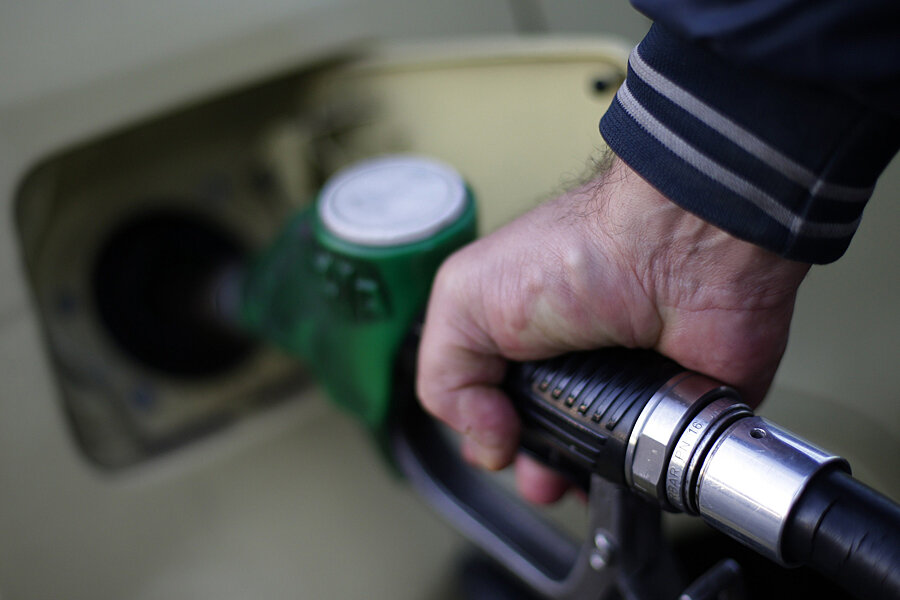Gas prices are plummeting. Should you buy an SUV?
Loading...
Oil prices have dropped by half in six months. Gas prices are averaging $2 a gallon or less in a dozen states. The fuel prices crash of 2014-2015 shows few signs of slowing.
Time to buy a sport utility vehicle, right?
That seems to be the logic of many consumers across the country. Sales of pickups, minivans, and SUVs in 2014 were the best they've been since before the Great Recession. Cheaper gas is one explanation, but it's only half the equation. The other half? Gas guzzlers just aren't guzzling as much gas as they used to. Lighter materials and better engines mean that cars – and trucks, minivans, and SUVs, too – go farther on a gallon of gas. Combine $2 pump prices with a truck or SUV that gets 25 or 30 miles per gallon and suddenly it's a very attractive deal for many consumers.
"[Trucks and SUVs] don't have the big cost penalty on fuel operation regardless of the price of fuel," Karl Brauer, senior analyst at Kelley Blue Book, an Irvine, California-based automotive research firm, says in a telephone interview. "They’re just not as expensive to run as they were 10 years ago."
In December, the fuel economy of vehicles sold averaged 25.1 mpg, according to the University of Michigan Transportation Research Institute in Ann Arbor, Mich. That's up 5 mpg from the same month in 2007 – a reflection of a decades-long improvement of vehicle fuel efficiency. It's good news for an industry that is the second largest contributor to US greenhouse gas emissions. The average new-vehicle driver produced 21 percent lower emissions in October 2014 than in October 2007, according to UMTRI.
But, in the short term, the December mpg figure reflects a slight backsliding in overall fuel economy as more shoppers opt for larger vehicles. December's average mpg was down 0.2 mpg from November, according to UMTRI, and down 0.7 mpg from the peak reached in August.
Meanwhile, gas prices continue to plummet. Last week, weekly regular US gas prices averaged $2.21 a gallon according to the US Energy Information Administration. That's down 8 cents from the week before, and a whopping $1.50 less than its 2014 peak of $3.71 in April.
It's easy to understand, then, why SUVs and pickups went flying off the lots in December. Sales of the Chevrolet Silverado and GMC Sierra surged 35 percent year-over-year to 81,273. The Ram Truck brand pickup sales jumped 32 percent to 44,222 vehicles. Overall, car and light truck sales were the best they've been since 2006, the Detroit News reports.
Still, buyer beware: Cheap gas won't last forever. The average vehicle lifespan is about 11 years, and oil is a notoriously volatile commodity likely to fluctuate greatly over that time. Fuel prices are likely to stay relatively low (although still historically high) in the coming months and perhaps even years, but most analysts predict crude and its refined fuel products will eventually resume an upward climb. Oil is becoming increasingly difficult (and expensive) to extract, and much of it flows from regions vulnerable to unrest and disruption.
“A well-supplied oil market in the short-term should not disguise the challenges that lie ahead, as the world is set to rely more heavily on a relatively small number of producing countries,” IEA chief economist Fatih Birol, chief economist of the Paris-based International Energy Agency, said in a release accompanying last fall's World Energy Outlook 2014. “The apparent breathing space provided by rising output in the Americas over the next decade provides little reassurance, given the long lead times of new upstream projects.”
US oil production is expected to peak at 9.1 million barrels per day in 2017, according to EIA projections, before steadily declining to 6.6 million barrels per day by 2040. Meanwhile, global consumption of liquid fuels is expected to rise by more than one-third between 2010 and 2040, according to EIA.
In other words, it's probably not a good idea to buy a new vehicle assuming oil and gasoline prices are going to stay where they are for very long. Of course, there are many other factors besides fuel economy that go into deciding which car to buy. People tend to buy trucks and SUVs not for their efficiency, but because they offer an elevated seating position or because they can transport more passengers and cargo.
A good rule of thumb for vehicle shopping, Mr. Brauer says, is to base cost calculations on a price of gas that is on the high side of the spectrum – perhaps something between $3.50 or $4.00 a gallon – even if it doesn't seem probable anytime soon.
"If you’re still ok with that kind of fuel bill, then buy that vehicle, and every day gas is cheaper, then that is gravy," Brauer says. "You have that much more money to save or spend on other things."






